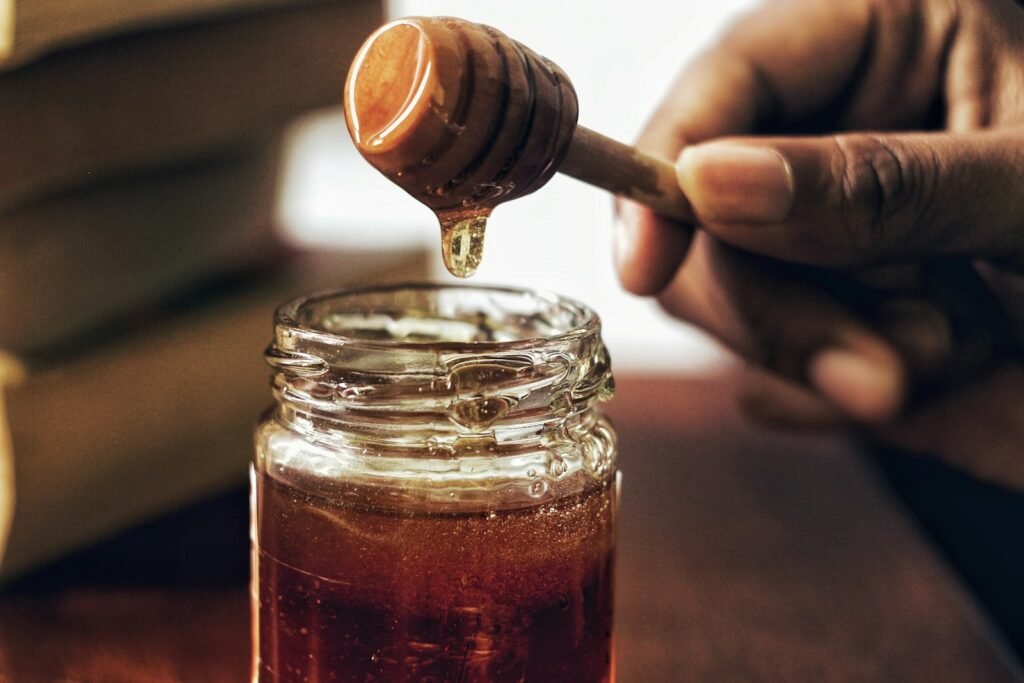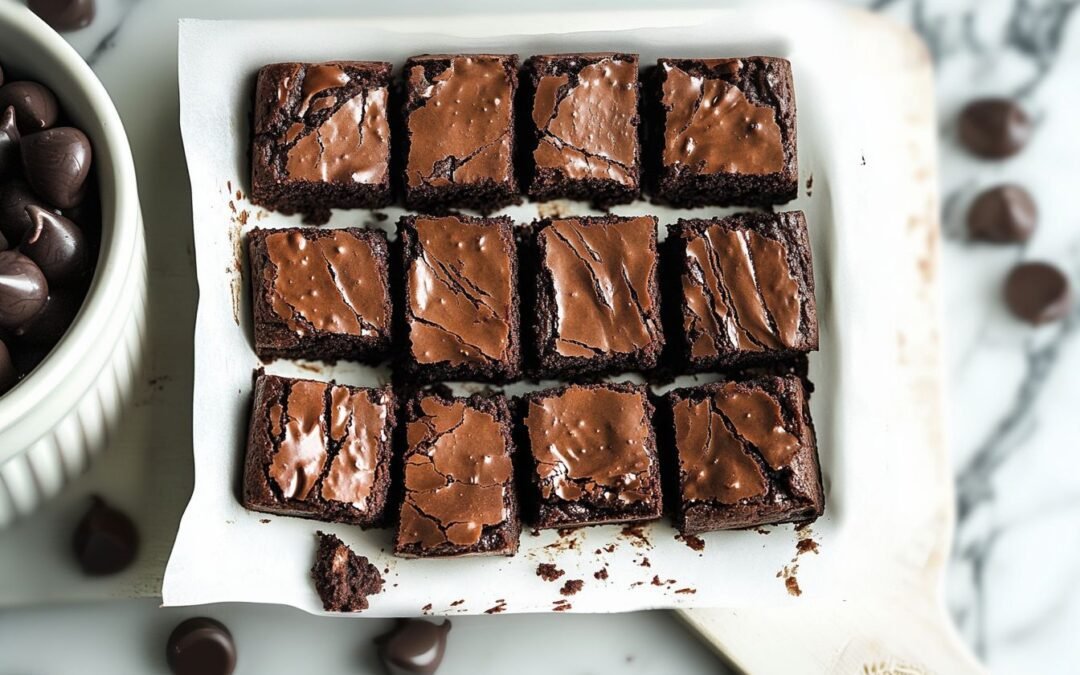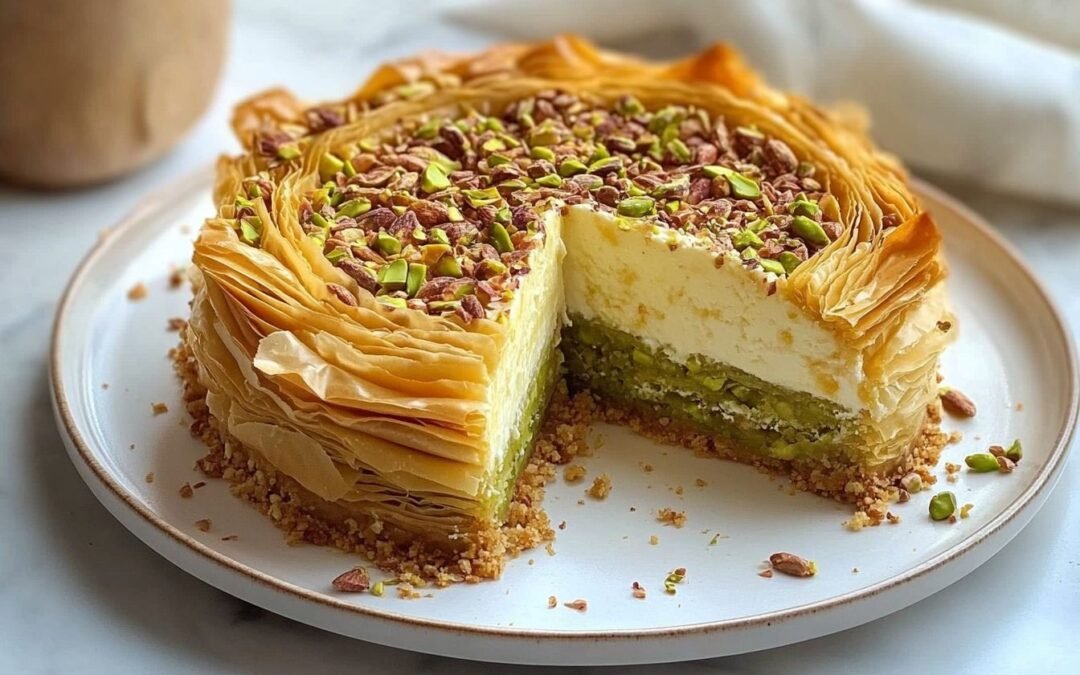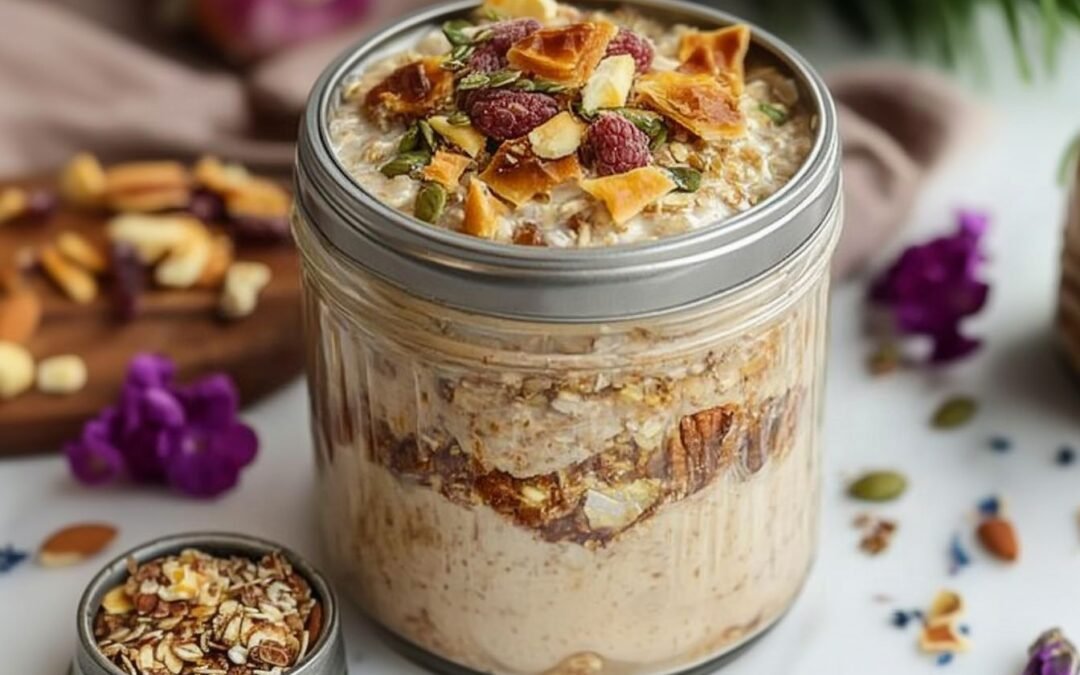Kunafa with honey is a Middle Eastern dessert that is as delicious as beautiful. It is a pastry made with vermicelli noodles, cheese, and a sweet syrup made with honey. The dish is a perfect balance of sweet and savory and is a favorite among many.
To make this kunafa, you will need a few key ingredients. You will need honey, heavy cream, ricotta, and mozzarella for the cheese filling. The vermicelli pasta knafeh is made with broken-up vermicelli pasta and softened butter. For the honey syrup, you will need honey and water. Finally, the dish is topped with crushed pistachios for an added crunch.
History of Kunafa
Kunafa is a popular Middle Eastern dessert that has been enjoyed for centuries. As a lover of sweets, I have always been fascinated by the history of this delicious treat. In this section, I will explore the origins of kunafa and the various regional variations that have developed over time.
Origins
The exact origin of kunafa is unknown, but it is believed to have originated in the Levant region of the Middle East. Some historians think it was first created in the city of Nablus, located in the West Bank. Others believe that it was first made in the city of Aleppo, which is located in Syria.
Kunafa is made with shredded phyllo dough, layered with cheese or cream, and baked until golden brown. The dessert is soaked in a sweet syrup, which gives it its unique flavor. Over time, kunafa has become a staple dessert in many Middle Eastern countries, including Egypt, Jordan, Lebanon, and Israel.
Regional Variations
While kunafa is popular throughout the Middle East, many regional dessert variations exist. In Egypt, for example, kunafa is often made with a mixture of semolina and phyllo dough, typically served with a side of clotted cream. In Lebanon, kunafa is often made with a sweet cheese called akkawi, which gives the dessert a salty-sweet flavor.
However, in Israel, kunafa is often made with a type of cheese called nabulsi, which is similar to akkawi but has a slightly different flavor. The dessert is typically served with a sweet syrup from sugar, water, and rose water.
Ingredients:
Cheese Filling:
- 2 tbsp of honey
- 1 cup of ricotta cheese
- 4 cups of mozzarella cheese
- 1 cup of heavy cream
Vermicelli Kunafa:
- 1 pack of broken-up vermicelli pasta
- 1 cup of softened butter
Honey Syrup:
- ¾ cup of honey
- ¾ cup of water
Topping:
- Crushed pistachios
How to make kunafa with honey?
- Combine all cheese-filling ingredients in a large bowl. Mix thoroughly until well integrated.
- In a saucepan over medium heat, combine honey with water. Stir continuously until a syrup consistency is achieved, approximately 5 minutes.
- Preheat your oven to 350°F (175°C).
- Prepare the Noodles:
- Spread the vermicelli noodles on a clean kitchen towel.
- Wrap the towel tightly and crush the noodles gently using the edge of a table.
- In a bowl, combine the crushed noodles with softened butter.
- Prepare the Noodles:
- Lightly butter an 8-inch round baking pan.
- Using the back of a spoon, press half of the noodle mixture into the bottom of the pan to create an even layer.
- Add the cheese filling and spread it uniformly.
- Top with the remaining noodle mixture, ensuring everything is firmly packed.
- Bake the Kunafa for 25 minutes until golden brown and crispy.
- While still hot, drizzle the honey syrup generously over the Kunafa. Garnish with crushed pistachios for added texture and flavor.
Storage and Preservation
- Store kunafa in an airtight container to prevent it from drying out.
- Keep it at room temperature for up to 2 days, or in the fridge for up to 5 days.
- If you want to freeze it, make sure to wrap it tightly in plastic wrap and then in aluminum foil to prevent freezer burn. It can be stored in the freezer for up to 2 months.
- When you’re ready to eat it, let it thaw completely in the fridge before reheating it in the oven at 350°F for 10-15 minutes.
Common Mistakes to Avoid
Firstly, it is important to avoid using too much syrup. While the sweet, sticky syrup is an essential component of kunafa, using too much can result in an overly sweet and soggy dessert. A good rule of thumb is to use just enough syrup to lightly coat the kunafa, without saturating it.
Another mistake to avoid is using the wrong type of cheese. While some recipes call for ricotta or cream cheese, these options can result in a mushy texture. It is best to use a cheese that is specifically made for kunafa, such as akawi or mozzarella, to achieve the perfect balance of creamy and chewy.
Additionally, it is important to properly butter the pan before layering the kunafa. Failing to do so can result in the dessert sticking to the pan and falling apart when trying to serve it. Take the time to generously butter the pan to ensure easy removal and a beautiful presentation.
Finally, it is crucial to not overbake the kunafa. While it may be tempting to leave it in the oven for a few extra minutes to achieve a golden brown color, doing so can result in a dry and tough dessert. Keep a close eye on the kunafa and remove it from the oven as soon as it is lightly golden.
Customizing Your Kunafa
- Honey Variations: While honey is a staple ingredient in kunafa, you can experiment with different types of honey to add unique flavors. For example, try using orange blossom honey for a subtle citrus taste or buckwheat honey for a rich, earthy flavor.
- Toppings: Kunafa is often served with crushed pistachios, but you can switch it up by using other nuts or toppings. Almonds, walnuts, and hazelnuts are all great options. You can also add fresh fruit like sliced strawberries or raspberries for a pop of color and flavor.
- Cheese: While traditional kunafa is made with akawi cheese, you can use other types of cheese for a twist. Try using ricotta cheese for a creamier texture or feta cheese for a tangy taste.
- Syrup: The syrup used in kunafa is typically made with sugar and water, but you can add other ingredients to change the flavor. For example, try adding a splash of rose water or orange blossom water for a floral taste.
- Shape: Kunafa is traditionally made in a circular shape, but you can experiment with other shapes and sizes. Try making mini kunafa cups or rectangular-shaped kunafa for a fun twist on the classic dessert.
Pairing with Beverages
Tea
A cup of hot tea is a classic accompaniment to sweet treats, and this dessert is no exception. I recommend pairing it with a light and floral tea, such as chamomile or jasmine. The delicate flavors of the tea won’t overpower the sweetness of the kunafa but rather enhance it.
Coffee
For coffee lovers, a cup of joe can be a great pairing. Opt for a medium roast coffee with nutty or chocolatey notes to complement the pastry’s flavors. If you prefer a milk-based coffee, a latte or cappuccino can also work well.
Juice
If you’re looking for a non-caffeinated option, a glass of fresh juice can be a refreshing pairing with this kunafa. Citrus juices, such as orange or grapefruit, can cut through the sweetness of the pastry and provide a tart contrast. Alternatively, a glass of apple or pear juice can complement the pastry’s warm spices.
Conclusion
Overall, kunafa with honey is a delicious and satisfying dessert that is perfect for any occasion. The combination of the crispy pastry, sweet cheese, and sticky honey creates a flavor and texture experience that is truly unique.
One of the things I love about it is how easy it is to make. With just a few simple ingredients and some basic kitchen tools, you can create a dessert that will impress your friends and family.
Another great thing about this dessert is how versatile it is. You can experiment with different types of cheese, such as ricotta or mozzarella, to create new and exciting flavor combinations. You can also add other toppings, such as chopped nuts or dried fruit, to give your kunafa even more texture and flavor.
In conclusion, if you’re looking for a delicious and easy-to-make dessert that is sure to impress, then kunafa with honey is worth trying. Whether you’re a seasoned baker or a beginner in the kitchen, this dessert is sure to become a new favorite.
By the way, this is a great dessert after having mujadara with lentils.
Get the recipe now (by clicking the image below):





